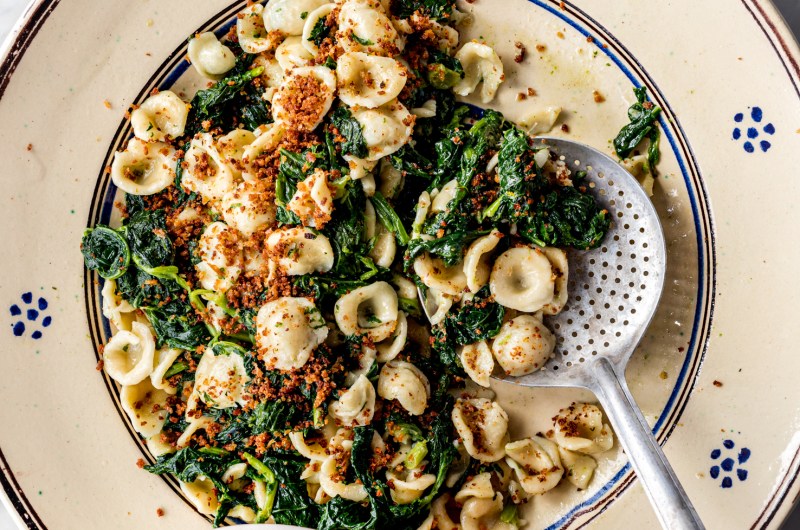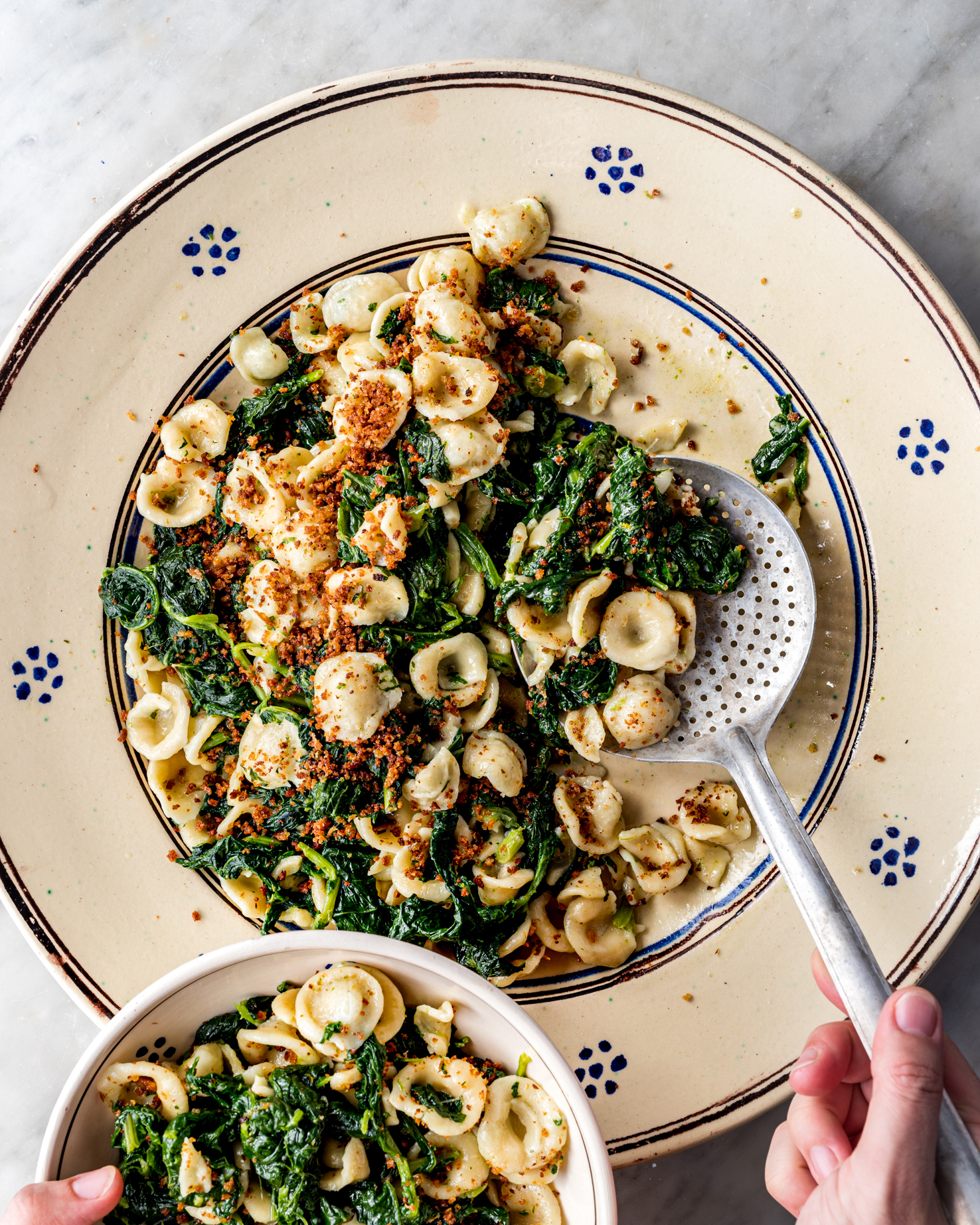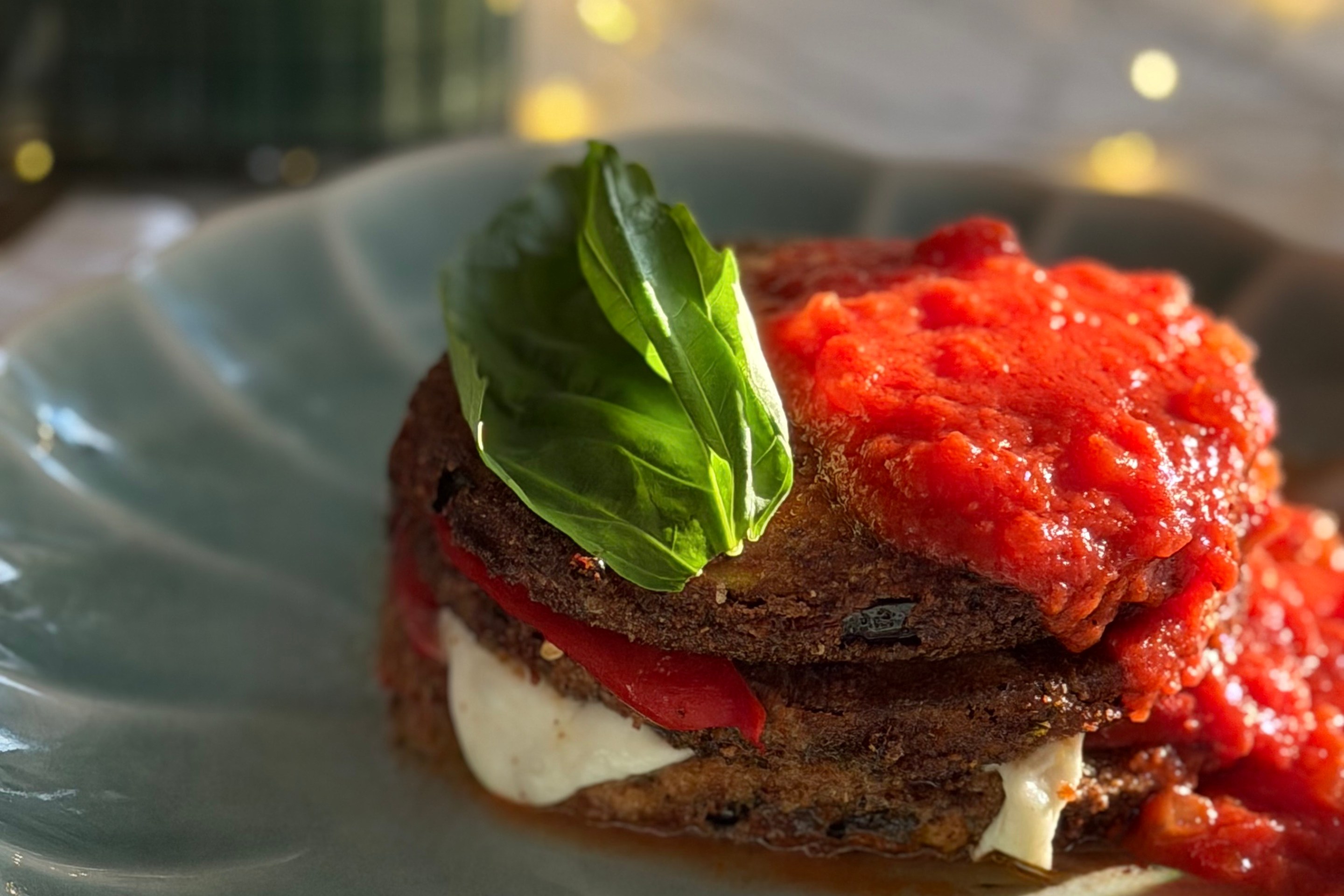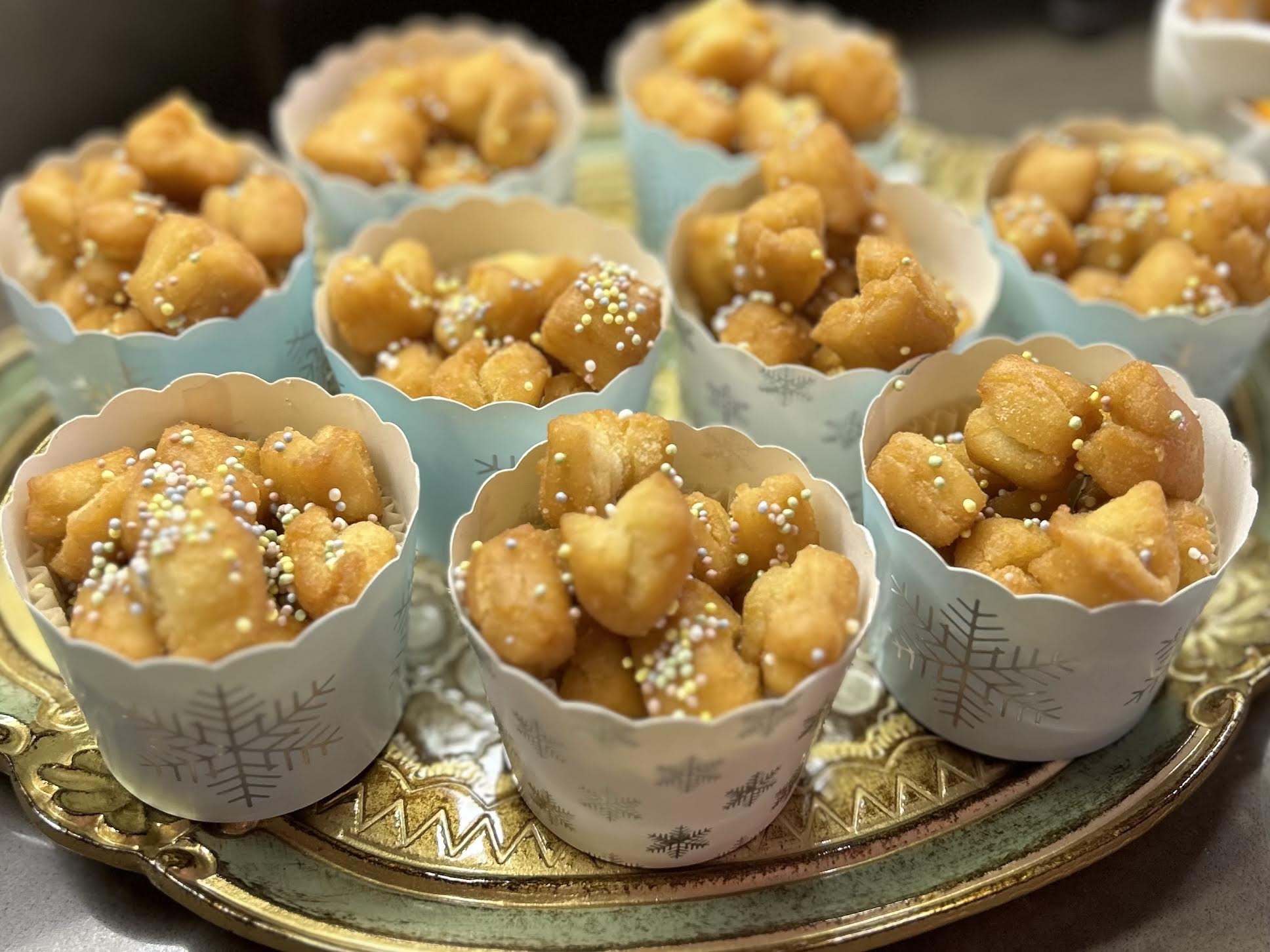In her new cookbook, Cucina Povera, Giulia Scarpaleggia explores "The Italian way of transforming humble ingredients into unforgettable meals," as the subtitle puts it. She graciously shares her version of an Apulian classic, orecchiette with broccoli rabe, with Appetito. Pick up the book for her inspiring recipes as well as for her husband Tommaso Galli's evocative photography.

Cime di rapa, known variously as broccoli rabe (or rape) or rapini in English, is the most representative vegetable of the Apulian winter. You’ll find it piled high in market stalls in the Southern Italian region as soon as the first cold days arrive.
With its bitter taste, broccoli rabe calls for robust, strong flavor combinations: it is excellent with meats, especially pork chops and sausages; with cheese, from a sharp pecorino to a creamy burrata; and even with fish, especially cod and anchovies. It is also a perfect complement to the Apulian extra-virgin olive oil, which is also usually quite bitter; don’t be stingy with the oil when cooking broccoli rabe.
If I had to choose one regional dish that summarizes the Apulian way with broccoli rabe, the best choice by far would be orecchiette con le cime di rapa. The flowers and leaves and tender stems of the greens are boiled together with fresh orecchiette, the ear-shaped pasta, and then tossed in anchovy-and-garlic–infused olive oil spiced with red pepper flakes. The dish is topped with breadcrumbs fried in olive oil to add color, flavor, and a satisfying crunch.
Serves 4 as a first course

Orecchiette with Broccoli Rabe
4
servings30
minutes40
minutesIngredients
- For the Orecchiette
2 1/2 cups 2 1/2 400 g semolina flour
3/4 cup 3/4 plus 2 tablespoons/200 ml water
- For the Broccoli Rabe Dressing
5 tablespoons 5 /75 ml extra-virgin olive oil
½ cup/50 g dry breadcrumbs
1 pound 1 /455 g broccoli rabe, tough stems removed
1 clove 1 garlic, crushed and peeled
4 4 oil-packed anchovy fillets, chopped
Red pepper flakes
Directions
- The day before, make the orecchiette: Pour the flour onto a work surface and shape it into a mound with a large well in the center. Add the water to the well and, using a fork, stir slowly to incorporate it, starting from the center and gradually picking up more flour from the edges. When the dough turns crumbly, switch to kneading with your hands. You want to knead the dough until it forms a ball and the gluten starts to develop, as this will render the sheets of pasta more elastic. The dough is ready when you have clean hands and a clean board and the dough is smooth, silky, and no longer sticky.
- Alternatively, you can make the dough in a stand mixer fitted with the dough hook. Knead for about 5 minutes on low speed, then turn it out and finish kneading by hand for about 5 minutes. (Or use dried orecchiette; see Note.)
- Cut off a small piece of the dough and keep the rest covered with an upturned bowl while you shape the orecchiette. Roll the piece of dough under your palms into a rope about ½ inch/1.5 cm thick, then use a blunt knife to cut it into ½-inch/1.5 cm pillows of dough.
- One at a time, use the rounded tip of the knife to push each dough pillow down and toward you; pushing the knife hard against the work surface will create the orecchiette’s characteristic rough texture. Press it down more in the center to thin the middle of the piece of dough; the dough will curl around and over the knife. Pull it off the knife and flip it over onto your thumb. Arrange the orecchiette on a clean tea towel and repeat with the remaining dough.
- Let the orecchiette dry overnight at room temperature.
- The next day, prepare the broccoli rabe dressing: In a small frying pan, heat 1 tablespoon of the olive oil over medium heat. Add the breadcrumbs and toast, stirring, for about 5 minutes, until golden brown. Set aside.
- Bring a large pot of water to a rolling boil and salt it generously. While the water heats, clean the broccoli rabe: Cut off the toughest stalks and discard. Rinse the rabe under cold running water and rip into large pieces.
- Plunge the broccoli rabe into the boiling water. Submerge it with a spoon and cook for 10 minutes, or until soft.
- Add the orecchiette, stir, and cook with the broccoli rabe for about 10 minutes, until al dente.
- While the pasta cooks, pour the remaining ¼ cup/60 ml olive oil into a large high-sided frying pan and heat over medium heat. Add the garlic, anchovies, and red pepper flakes to taste and cook for about 5 minutes, until the garlic is golden and the anchovies have melted.
- Drain the orecchiette and broccoli rabe and toss them into the pan with the garlicky olive oil. Cook for about 2 minutes, tossing well to coat the orecchiette and rabe, then sprinkle with the toasted breadcrumbs. Serve immediately.
- Note: You can substitute 1 pound/455 g dried orecchiette for the fresh pasta. If using dried orecchiette, remove the broccoli rabe from the boiling water once it is cooked, then cook the orecchiette in the same water according to the package instructions.
Notes
- Note: You can substitute 1 pound/455 g dried orecchiette for the fresh pasta. If using dried orecchiette, remove the broccoli rabe from the boiling water once it is cooked, then cook the orecchiette in the same water according to the package instructions.
- Variation: If you want to go the extra mile, serve the orecchiette with burrata, the decadent cheese with a creamy filling of shredded mozzarella and cream. Cut the burrata open, pull it apart, and place on top of the pasta.
- Excerpted from Cucina Povera by Giulia Scarpaleggia (Artisan Books). Copyright © 2023. Photographs by Tomasso Galli
Did you make this recipe?
Tag @appetitomagazine on Instagram and hashtag it with #italianfoodanddrink
Like this recipe?
Follow @Appetitomagazine on Pinterest
Follow us on Facebook!
Follow us on Facebook







